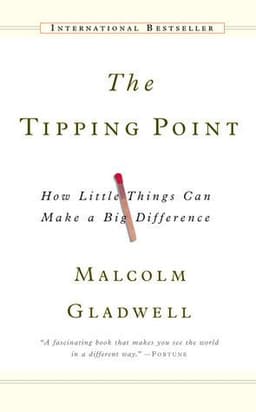
The Tipping Point Book Summary
How Little Things Can Make a Big Difference
Book by Malcolm Gladwell
Summary
The Tipping Point reveals the hidden forces that cause social epidemics - from fashion trends to crime waves - to spread like viruses, and shows how to start and control positive epidemics of our own.
Sign in to rate
Average Rating: 5
The Three Rules Of Epidemics
Gladwell introduces the concept of social epidemics - that ideas, products, messages and behaviors spread like viruses. The book will explain the three rules that cause them to "tip" into widespread popularity:
- The Law of the Few: a handful of exceptional people play an outsize role in spreading ideas
- The Stickiness Factor: there are specific ways to make a message memorable and "sticky"
- The Power of Context: epidemics are sensitive to the conditions and circumstances of the times and places they occur
These three elements can cause rapid, dramatic changes in society - often unexpectedly and inexplicably.
Section: 1, Chapter: 1
How New York's Crime Epidemic Tipped
In the mid-1990s, crime in New York City plummeted rapidly and dramatically - the murder rate fell by 2/3 in 5 years. Gladwell argues this epidemic of crime reduction tipped due to a combination of small, subtle factors:
- Fixing broken windows and cleaning up graffiti - sending a signal of order
- Cracking down on fare-beating in the subways
- Rebuilding the organizational structure and management of the police
These changes in environment and context made people more likely to obey the law. The decline was too rapid to be explained by big slow variables like the economy, drug use, etc. "The Power of Context says that human beings are a lot more sensitive to their environment than they may seem."
Section: 1, Chapter: 1
It Only Takes A Few To Start An Epidemic
The Law of the Few states that social epidemics are driven by a small number of exceptional people. In disease epidemics, often 20% of people do 80% of the transmission.
The same applies to social changes: "In the case of Hush Puppies, the great mystery is how those shoes went from something worn by a few fashion-forward downtown Manhattan hipsters to being sold in malls across the country.
What was the connection between the East Village and Middle America? The Law of the Few says the answer is that one of these exceptional people found out about the trend, and through social connections and energy and enthusiasm and personality spread the word about Hush Puppies just as people like Gaetan Dugas were able to spread HIV."
Section: 1, Chapter: 1
Little Changes Can Cause Big Effects
The Stickiness Factor reminds us that small, seemingly trivial changes in the presentation or structuring of information can make a big difference in how much impact it makes. Don't underestimate the power of subtle "tweaks" to make your message or product more memorable, actionable, and compelling. Look for those tiny changes that can energize or reengineer your idea and make it tip. Examples in the book include:
- Adding a map to an anti-smoking ad made it much more effective
- Putting mirrors in a workplace cut employee theft
- Sesame Street became a hit by constantly tinkering with small elements of the show to maximize viewer attention and retention
Section: 1, Chapter: 1
Connectors, Mavens, And Salesmen
The Law of the Few relies on three key types of people who are critical to social epidemics:
- Connectors are people with a special gift for bringing the world together. They have extraordinarily large social networks and are great at making friends and acquaintances. Examples include Paul Revere and the popular girl in high school who knows everyone.
- Mavens are information specialists. They accumulate knowledge and are eager to share it with others. They start word-of-mouth epidemics due to their knowledge, social skills, and ability to communicate. Examples include a friend who knows all about the latest gadgets or restaurants.
- Persuaders are charismatic people with powerful negotiation skills. They exert "soft" influence rather than direct persuasion. Examples include successful salespeople and advertisers.
Any social epidemic tips because of the involvement of Connectors, Mavens, and Persuaders. They are the ones who make things happen.
Section: 1, Chapter: 2
Six Degrees Of Separation
Stanley Milgram's famous experiment showed that most people are connected by about 6 links in a chain. A few key points:
- A very small number of people are connected to everyone else in just a few steps, while the rest of us are linked to the world through those special few.
- In a social epidemic, Connectors spread ideas to a wide range of people, Mavens provide the message itself, and Persuaders convince people to act on that message.
- Paul Revere was a Connector, spreading the word "The British are coming!" His social connections enabled him to tip public opinion and mobilize resistance.
"Six degrees of separation doesn't mean that everyone is linked to everyone else in just six steps. It means that a very small number of people are linked to everyone else in a few steps, and the rest of us are linked to the world through those special few."
Section: 1, Chapter: 2
The Diffusion Model
Researchers have studied how new ideas and innovations spread through a population, known as the diffusion model:
- Innovators are adventurous people who eagerly try new ideas
- Early Adopters are influential, respected, careful choosers
- Early Majority are thoughtful people who accept change more quickly than average
- Late Majority are skeptical people who adopt new ideas after the majority
- Laggards are traditional, conservative people who are last to change
Geoffrey Moore noted a "chasm" between the Early Adopters and Early Majority. Epidemics only tip once you reach the Early Majority. To do that, the idea has to be translated from something specialized and difficult to understand to something accessible to the mainstream. That's the job of Connectors, Mavens, and Persuaders - to bridge the chasm.
Section: 1, Chapter: 2
Sesame Street: The Stickiness Factor In Action
Sesame Street succeeded because it learned how to make TV sticky for kids:
- It discovered that kids don't watch TV passively but actively engage if the content is compelling
- It pioneered making learning fun and accessible with entertaining characters, storylines and music
- It constantly tested which elements held kids' attention and which caused them to tune out
- It made small, subtle tweaks to make the educational content as memorable and impactful as possible
"If you paid careful attention to the structure and format of your material, you could dramatically enhance stickiness. But is it possible to make a show even stickier than Sesame Street?"
Section: 1, Chapter: 3
Making Messages Memorable And Actionable
To make your message "sticky," pay close attention to its structure and format, not just its content:
- Break it down into the simplest possible terms so people can understand and absorb it
- Tell stories, use humor, and create curiosity to engage people's emotions
- Provide specific, concrete calls to action so people know exactly what to do
- Don't overwhelm with information; be succinct and prioritize the core message
- Constantly test and refine your approach based on feedback and results
The goal is to package your message in a way that makes it impossible to ignore and easy to spread.
Section: 1, Chapter: 3
The Power Of Television Advertising
According to studies, most people need to see an ad at least 6 times before they remember it. Procter & Gamble and other consumer goods giants spend billions "hammering home" simple messages again and again until they stick.
In one famous study, a scientist tried to persuade college students to get tetanus shots with a campus booklet and only 3% did. When he added a map of the campus clinic's location and times shots were available, the vaccination rate jumped to 28%. That tiny tweaks made the message actionable and enabled it to tip.
Section: 1, Chapter: 3
Two Principles Of Epidemic Transmission
For an idea or product to tip into an epidemic, two things must happen:
- It must be contagious, spreading from person to person
- The idea itself must be "sticky" enough to stay in people's minds and compel them to action.
"Stickiness means that a message makes an impact. You can't get it out of your head. It sticks in your memory."
The two work together - a contagious idea will spread quicker if it's also sticky. But both factors must be present for an epidemic to take hold. Making a message contagious isn't enough on its own.
Section: 1, Chapter: 3
Broken Windows Theory: The Power Of Context
The Broken Windows theory argues that crime is the inevitable result of disorder:
- If a window is broken and left unrepaired, people conclude that no one cares and no one is in charge
- This sends a signal that anything goes and the sense of anarchy spreads
- Relatively minor problems like graffiti, public disorder, and panhandling are "small cracks" that invite more serious crimes
"The impetus to engage in a certain kind of behavior does not come from a certain kind of person but from a feature of the environment."
An epidemic can be tipped by tiny changes in context, in the same way that New York's crime epidemic tipped when the police began fixing "broken windows" like graffiti and fare-beating.
Section: 1, Chapter: 4
The Fundamental Attribution Error
We tend to believe that people's actions are a result of their innate character. Good people do good things, bad people do bad things.
But the Power of Context shows that people are actually powerfully influenced by their environment. The same person may act very differently depending on the situation.
Stanford psychologists found that normal, psychologically healthy students began acting sadistically when placed in a prison-like environment. And seminary students, when told they were late, failed to help a man in distress - contradicting their stated values.
"The convictions of your heart and the actual contents of your thoughts are less important, in the end, in guiding your actions than the immediate context of your behavior."
Character isn't static - it's flexible and responsive to circumstances. That means an epidemic can be tipped by small but critical changes in a situation.
Section: 1, Chapter: 4
The Bystander Effect: Why No One Helps In A Crisis
In 1964, Kitty Genovese was murdered on a New York street while 38 bystanders watched from their windows but did nothing. This led to a famous series of experiments revealing the Bystander Effect.
Psychologists discovered that a person's likelihood of helping in a crisis goes down as the number of bystanders goes up:
- In groups, responsibility is diffused and no one feels compelled to act
- People look to others' behavior to determine if a situation is really an emergency
- We assume others have already called for help or don't need our assistance
Ironically, a victim is more likely to get help if there is only one witness instead of a crowd. In groups, our normal social cues get overwhelmed by inertia and inaction.
The implication is that epidemics are sensitive to the smallest changes in social context and group dynamics. What seems like a minor tweak in the environment can dramatically shift behavior.
Section: 1, Chapter: 4
The Rule Of 150: The Magic Number For Groups
There seems to be a tipping point in the size of social groups:
- Below 150 members, a group can rely on informal social norms, peer pressure and personal relationships to maintain cohesion
- Above 150, rules, hierarchy, and formal authority are needed to keep order. Things become impersonal and unwieldy.
The dynamics of a group change fundamentally when it exceeds 150 people. This number shows up again and again:
- Hunter-gatherer societies around the world have average village sizes of 148
- Offices tend to max out around 150-200 employees
- The Hutterite religious communities always split when they exceed 150
"At 150, the Hutterites believe, something happens - something indefinable but very real - that somehow changes the nature of community overnight."
By keeping groups under 150, an organization can exploit the bonds of memory and peer pressure to maximize cohesion and trust. Going over that threshold makes an epidemic vulnerable to tipping in the wrong direction.
Section: 1, Chapter: 5
Dunbar's Number: The Brain's Social Channel Capacity
According to anthropologist Robin Dunbar, the human brain can only handle about 150 close relationships at a time. As a social group grows, the number of links between members increases exponentially, not linearly. Keeping track of those relationships consumes more and more mental effort.
At some point the brain reaches its limit. Dunbar found a strong correlation between primate brain size and average social group size. For humans, that cognitive boundary seems to be 150.
"The figure of 150 seems to represent the maximum number of individuals with whom we can have a genuinely social relationship, the kind of relationship that goes with knowing who they are and how they relate to us."
By staying under Dunbar's number, an organization can tap into the brain's natural social wiring, and prevent social cohesion from breaking down.
Section: 1, Chapter: 5
Transactive Memory: How Groups Think Together
Small, close-knit groups can develop a kind of shared memory system called transactive memory. Over time, members unconsciously divvy up and specialize in remembering different types of information based on their unique skills:
- Bob becomes the go-to for tech help and fixes everyone's computer issues
- Alice is the expert on company history and institutional knowledge
- Charlie knows all about their clients' businesses and needs
The group's memory becomes a division of cognitive labor, not just a sum of individual minds. They can collectively store and process far more knowledge than any one person.
This works through intimate social bonds, not org charts. Transactive memory is why small, tight-knit teams are often more efficient than large bureaucratic divisions.
Section: 1, Chapter: 5
Taking Advantage Of Context
Three ways to apply the Power of Context to spark epidemics:
- Size matters: Keep groups under 150 to maximize social cohesion and peer pressure
- Proximity and space matter: Design physical spaces to maximize interaction and random connections between people (Steve Jobs famously did this at Pixar)
- Disruptive context matters: If you want to shift group behavior, disrupt their normal environment (like cleaning graffiti to reduce crime)
"The key to getting people to change their behavior, in other words, to care about their neighbor in distress, sometimes lies with the smallest details of their immediate situation."
Instead of trying to change people's character or choices, focus on tweaking the context and environment around them in subtle but powerful ways. The results can be dramatic.
Section: 1, Chapter: 5
The Power Of Translation: Spreading Ideas Across The Chasm
There is often a "chasm" between the world of early adopters and the mainstream. Ideas often fail to tip because what's compelling to innovators isn't to the masses. To cross the chasm, epidemic ideas must be skillfully translated:
- The core concept must remain intact but the surface details tweaked for mainstream sensibilities
- As in a game of "telephone," as a message spreads, certain details and context are lost while others get amplified
- Mavens, Connectors and Salesmen serve as the "translators" repackaging ideas for each audience
"Mavens are data banks. They provide the message. Connectors are social glue: they spread it. But there is also a select group of people—Salesmen—with the skills to persuade us when we are unconvinced of what we are hearing, and they are as critical to the tipping of word-of-mouth epidemics as the other two groups."
Good "idea translators" find a delicate balance: they tweak the packaging and details just enough to make it contagious without losing its original essence and authenticity.
Section: 1, Chapter: 6
This concept is also discussed in:
Crossing the Chasm
Teen Smoking As A Social Epidemic
Teen smoking spreads much like an epidemic disease:
- A few "carrier" teens start the trend; they tend to be high-social-status individualists that others look up to
- Smoking becomes a symbol of rebellion, sophistication and independence
- Teens overestimate how many of their peers smoke, feeling pressure to conform
- The behavior spreads rapidly and almost invisibly via peer influence
"The success of epidemics depends on the involvement of people with a set of rare social gifts. In this case, it's not sexual promiscuity that gets the epidemic going, as with AIDS. It's hyperconnectedness. It's a small number of people who are extraordinarily well connected who spread the thing."
Section: 1, Chapter: 7
Making Cigarettes Less Compelling
Two strategies to make cigarettes less "sticky" to teens:
1. Lower nicotine levels below the "tipping point" of addiction
- Evidence suggests there is a nicotine threshold below which the chemical "hook" of cigarettes doesn't fully take hold
- By lowering nicotine in cigarettes, smoking becomes more of a casual habit than a physical addiction
2. Raise the age of the "stickiest" customers
- Smokers who start as teens are much more likely to be lifelong smokers
- By delaying the onset of smoking even a few years, the behavior is less likely to become a permanent lifestyle
Though teen smoking is a powerful epidemic, small changes in the stickiness and circumstances of the behavior can have an outsized effect in reversing it. The same factors that cause it to tip can also cause it to collapse.
Section: 1, Chapter: 7
Tipping Point Lessons From The Real World
Some key lessons from the stories and studies covered in The Tipping Point:
- Little changes can have big effects. Subtle, easy tweaks are often more effective than big, flashy, expensive ones.
- Think in terms of epidemics. Ask yourself: is my message contagious? Is it sticky? Have I harnessed the power of context?
- What looks like a people problem is often a situation problem. Don't blame individuals. Fix broken windows and tweak the environment.
- Focus on the Law of the Few. A tiny percentage of special people can trigger a tipping point. Find them and focus on them.
- Find the chasm and build a bridge across it. To tip an epidemic, you need mavens, connectors and salesmen to translate your message.
"The world — much as we want it to — does not accord with our intuition. This is the second lesson of the Tipping Point. Those who are successful at creating social epidemics do not just do what they think is right. They deliberately test their intuitions."
Section: 1, Chapter: 8
The Paradox Of Epidemics: The Importance Of Growth In Isolation
To create an epidemic movement, you often have to create many small movements first:
- Small groups, under 150 members, are best for incubating new ideas
- Groups constrained by space, proximity or shared interests maximize the "stickiness" of a message
- Only by tipping many small groups first can you get the critical mass for a larger epidemic
"Rebecca Wells says that what she began to realize as the Ya-Ya epidemic grew was that it wasn't really about her or even about her book: it wasn't one epidemic focused on one thing. It was thousands of different epidemics, all focused on the groups that had grown up around Ya-Ya."
To tip big, focus small. Build a network of tiny tipping points, loosely connected but closely aligned. Let the power of small groups do the work.
Section: 1, Chapter: 8
Related Content
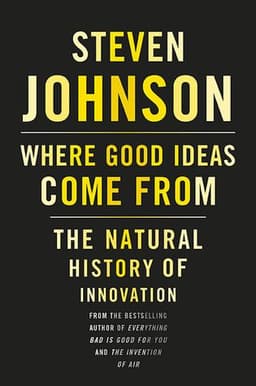
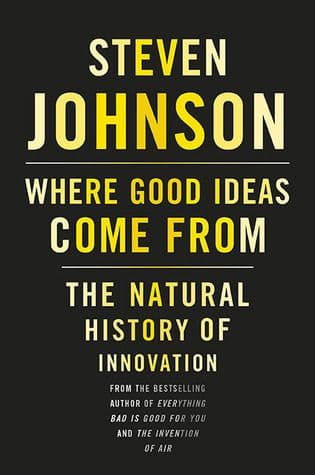
Where Good Ideas Come From Book Summary
Steven Johnson
Steven Johnson argues that breakthrough innovations arise from connected environments that enable the serendipitous collision of slow hunches, happy accidents, and novel combinations of existing ideas, rather than isolated eureka moments of lone genius.
Steven Johnson argues that breakthrough innovations arise from connected environments that enable the serendipitous collision of slow hunches, happy accidents, and novel combinations of existing ideas, rather than isolated eureka moments of lone genius.
History
Innovation
Science
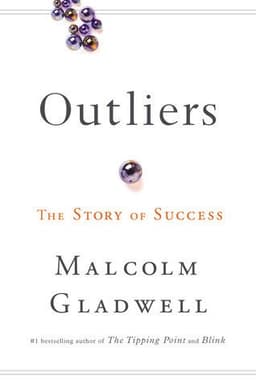
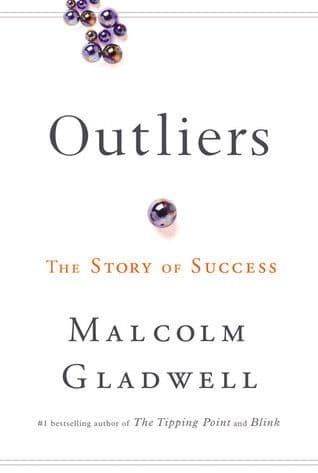
Outliers Book Summary
Malcolm Gladwell
Outliers looks into the lives of exceptional individuals, uncovering the often-overlooked factors that contribute to their success. It challenges the notion of the "self-made" individual, highlighting the crucial role of opportunity, cultural legacies, and hidden advantages in shaping the path to achievement.
Outliers looks into the lives of exceptional individuals, uncovering the often-overlooked factors that contribute to their success. It challenges the notion of the "self-made" individual, highlighting the crucial role of opportunity, cultural legacies, and hidden advantages in shaping the path to achievement.
Psychology
Performance
Personal Development
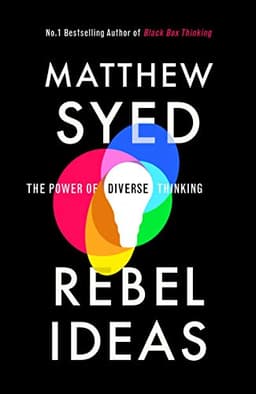
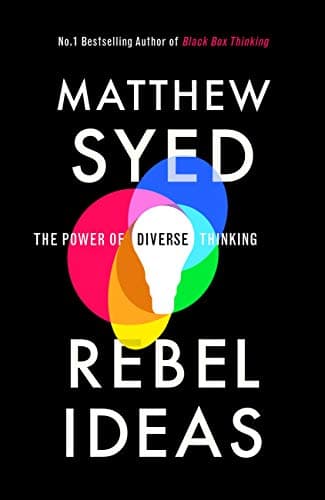
Rebel Ideas Book Summary
Matthew Syed
Matthew Syed reveals the vital ingredient missing from our understanding of success: cognitive diversity. Rebel Ideas shows how bringing together different insights, perspectives and thinking styles turbocharges creativity, problem-solving and decision-making, to improve performance in today's complex world.
Matthew Syed reveals the vital ingredient missing from our understanding of success: cognitive diversity. Rebel Ideas shows how bringing together different insights, perspectives and thinking styles turbocharges creativity, problem-solving and decision-making, to improve performance in today's complex world.
Psychology
Innovation
Business
Leadership

